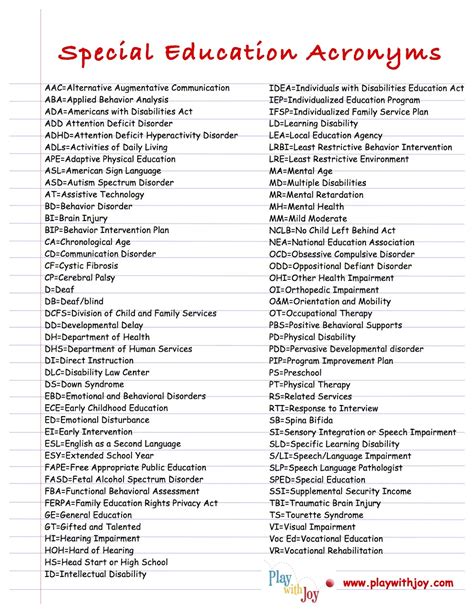Every student has their own unique set of educational needs, and there are a variety of schools out there to meet those needs. But with so many different acronyms floating around, it can be hard to keep track of them all.

That’s why we’ve put together this handy guide to the most common ASAP (All Day School Acronyms).
K-12 Education Acronyms
- ESL: English as a Second Language
- ELL: English Language Learner
- GED: General Education Development
- IB: International Baccalaureate
- IELTS: International English Language Testing System
- SAT: Scholastic Aptitude Test
- ACT: American College Testing
- AP: Advanced Placement
- PSAT: Preliminary SAT
- TOEFL: Test of English as a Foreign Language
Higher Education Acronyms
- AA: Associate of Arts
- AS: Associate of Science
- BA: Bachelor of Arts
- BS: Bachelor of Science
- MA: Master of Arts
- MS: Master of Science
- PhD: Doctor of Philosophy
- EdD: Doctor of Education
- MBA: Master of Business Administration
- JD: Juris Doctor
Other School Acronyms
- PTA: Parent Teacher Association
- PTO: Parent Teacher Organization
- SAC: School Advisory Council
- SBDM: School-Based Decision Making Council
- AYP: Adequate Yearly Progress
- NCLB: No Child Left Behind Act
- ESEA: Elementary and Secondary Education Act
- IDEA: Individuals with Disabilities Education Act
- FERPA: Family Educational Rights and Privacy Act
Why Acronyms Matter
Acronyms are a shorthand way to represent complex concepts or organizations. They can save time and space, and they can make it easier to communicate with others who are familiar with the same acronyms.
In the context of education, acronyms can be helpful for students, parents, and educators alike. Students can use acronyms to keep track of their classes and assignments. Parents can use acronyms to understand their child’s educational progress. And educators can use acronyms to communicate with each other about students and educational programs.
How to Use Acronyms Effectively
When using acronyms, it is important to be consistent. Use the same acronym for the same concept or organization each time. This will help to avoid confusion.
It is also important to be aware of the audience you are communicating with. If you are not sure whether your audience is familiar with a particular acronym, it is best to define it the first time you use it.
Conclusion
Acronyms are a common part of the educational landscape. By understanding the most common ASAPs, you can better navigate the educational system and be prepared for anything your school throws your way.
Additional Resources
- Acronyms and Abbreviations in Education
- The Ultimate Guide to Educational Acronyms
- Acronyms and Abbreviations Used in Schools
FAQs
1. What is the most common ASAP?
The most common ASAP is ESL (English as a Second Language).
2. What is the difference between an AA and an AS degree?
An AA degree is an Associate of Arts degree, while an AS degree is an Associate of Science degree. AA degrees typically focus on the liberal arts, while AS degrees typically focus on science, technology, engineering, and mathematics (STEM).
3. What is the difference between a BA and a BS degree?
A BA degree is a Bachelor of Arts degree, while a BS degree is a Bachelor of Science degree. BA degrees typically focus on the liberal arts, while BS degrees typically focus on STEM.
4. What is the difference between a MA and an MS degree?
A MA degree is a Master of Arts degree, while an MS degree is a Master of Science degree. MA degrees typically focus on the liberal arts, while MS degrees typically focus on STEM.
5. What is the difference between a PhD and an EdD degree?
A PhD degree is a Doctor of Philosophy degree, while an EdD degree is a Doctor of Education degree. PhD degrees typically focus on research, while EdD degrees typically focus on practice.
6. What is the difference between a PTA and a PTO?
A PTA is a Parent Teacher Association, while a PTO is a Parent Teacher Organization. PTAs are typically more focused on fundraising and social activities, while PTOs are typically more focused on educational issues.
